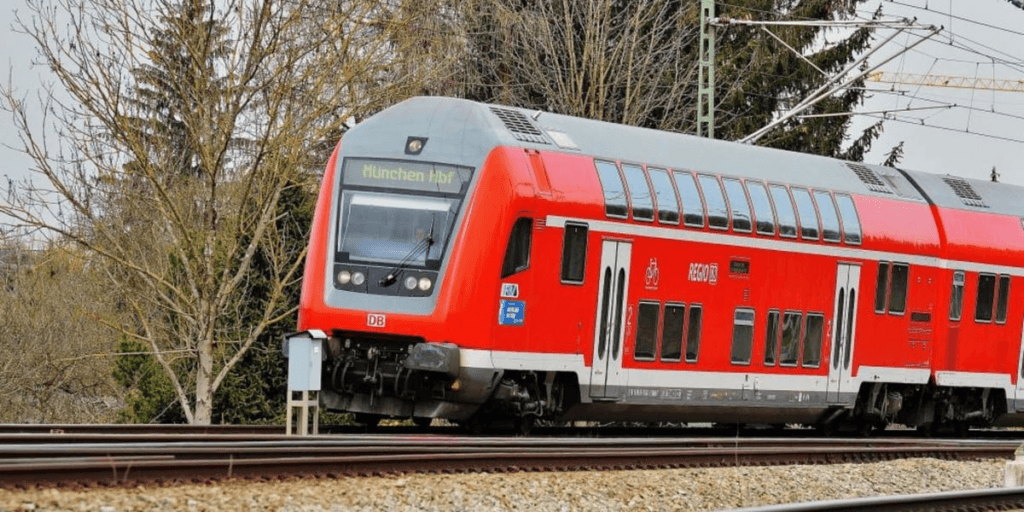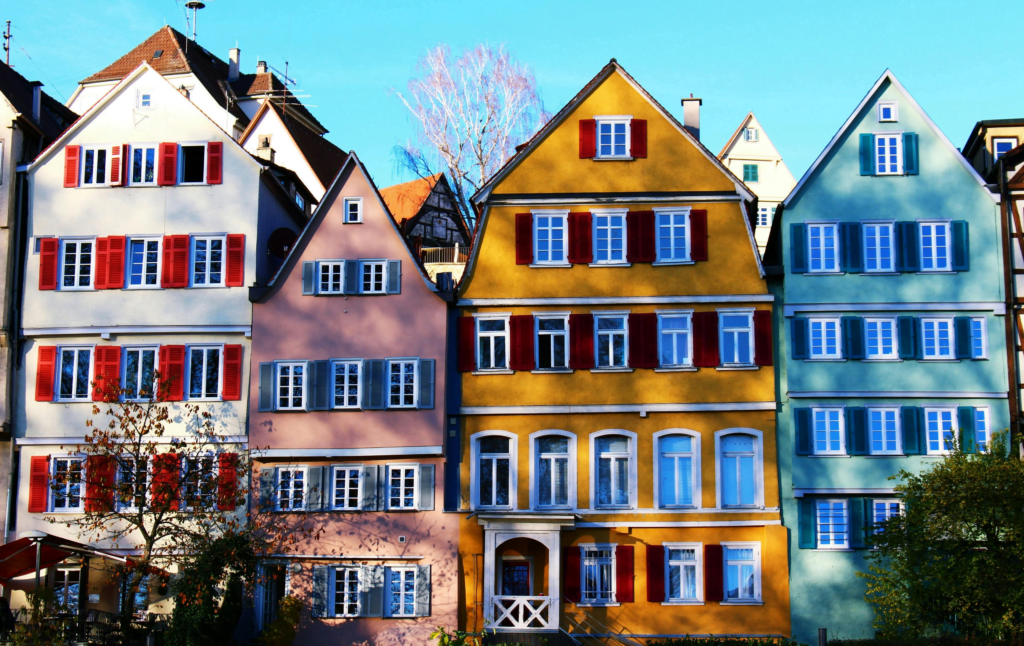
Germany, a country renowned for its rich history, diverse culture, and breathtaking landscapes, is also famous for its highly efficient and well-connected public transportation system. From bustling metropolises like Berlin, Munich, and Hamburg to quaint small towns and scenic villages, getting around Germany is both straightforward and cost-effective. This article serves as a comprehensive guide to navigating Germany’s public transport, covering everything you need to know to make the most of your trip while keeping your travel budget intact.
Why Choose Public Transportation in Germany?
Germany’s public transportation network is a reflection of the country’s commitment to punctuality, safety, and sustainability. Trains, buses, trams, and subways are available across almost all urban and rural areas, ensuring seamless connectivity. Opting for public transportation not only minimizes travel expenses but also allows you to experience Germany like a local.
The system is designed with accessibility and convenience in mind, making it an excellent choice for both locals and tourists. Additionally, public transport in Germany is eco-friendly, which aligns with the country’s efforts to reduce carbon emissions and promote sustainable travel.
Understanding the Different Modes of Transportation
- Deutsche Bahn (DB) Trains
Deutsche Bahn (DB) is Germany’s primary rail operator, providing a wide range of train services. Whether you’re commuting within a city, traveling across the country, or hopping across borders to neighboring countries, DB has a suitable option for every need:- ICE (InterCity Express): The fastest and most comfortable trains, connecting major cities like Berlin, Frankfurt, Munich, and Cologne. These high-speed trains can reach speeds of up to 300 km/h (186 mph), making long-distance travel quick and efficient.
- IC/EC (InterCity/EuroCity): These are slightly slower than ICE but still provide an excellent long-distance service. The EuroCity (EC) trains connect German cities to destinations in neighboring countries like Switzerland, Austria, and the Czech Republic.
- Regional Trains (RE and RB): Ideal for traveling within a state or region, these trains stop at smaller towns and villages, offering a more scenic and leisurely travel experience.
- S-Bahn (Suburban Trains): S-Bahn trains operate in metropolitan areas and connect city centers with suburban neighborhoods and surrounding regions.
- U-Bahn and Trams
The U-Bahn is Germany’s underground metro system, available in cities such as Berlin, Munich, and Hamburg. It’s perfect for short-distance travel within city centers. Trams, on the other hand, run above ground and are particularly prevalent in cities like Dresden, Leipzig, and Stuttgart. Trams are a great way to explore inner-city areas and tourist attractions. - Buses
Buses complement train and tram services, covering areas that are not served by other modes of transport. Long-distance buses such as FlixBus offer an economical way to travel between cities, especially for budget travelers. For urban travel, buses operate frequently and usually run late into the night, making them a reliable option for city exploration. - Ferries and River Cruises
While not a primary mode of transport, ferries and river cruises are a scenic way to travel in regions like Hamburg, Berlin, and along the Rhine and Elbe rivers. These water routes offer a unique perspective on the country’s cities and landscapes.
Ticketing and Fares: What You Need to Know
Navigating ticket options can be a bit overwhelming for first-time visitors, but with a little understanding, you can find the most affordable way to travel:
- Types of Tickets
- Single Tickets: Valid for a one-way journey and can be used on any mode of transport within the selected zone. Prices vary depending on the city and distance traveled.
- Day Tickets: These allow unlimited travel within a city or region for a day. Day tickets are cost-effective if you plan to make multiple trips in a day.
- Group Tickets: Available for small groups (up to 5 people) traveling together. The Bayern Ticket and the Schönes-Wochenende-Ticket are popular options for groups looking to explore specific regions affordably.
- Weekly and Monthly Passes: Ideal for long-term travelers, students, and business visitors. These passes offer unlimited travel within the designated zones for the duration of the pass.
- Deutschland Ticket (49-Euro Ticket): Launched as part of a national initiative, this monthly subscription ticket offers unlimited travel on regional and local trains, buses, trams, and subways across Germany. The Deutschland Ticket is a game-changer for budget travelers.
- Purchasing Tickets
Tickets can be bought from vending machines at train stations, online via Deutsche Bahn’s website, or through the DB Navigator app. For local transport, tickets are available at kiosks, vending machines, and in some cases, from the driver. - Validating Tickets
Ticket validation is essential before boarding. Look for yellow or red validation machines at train stations or inside buses and trams. Fines for traveling without a validated ticket (Schwarzfahren) are steep, so always ensure your ticket is stamped.
Regional Travel: State-Specific Options
Each German state offers its own set of regional travel options, often at discounted prices:
- Bayern Ticket (Bavaria Ticket)
A great option for exploring Bavaria, the Bayern Ticket allows unlimited travel on regional trains, buses, and trams within Bavaria. Popular destinations include Munich, Nuremberg, and scenic spots like Neuschwanstein Castle. - Berlin-Brandenburg Ticket
Covering Berlin and the surrounding state of Brandenburg, this ticket is perfect for day trips to destinations like Potsdam and the Spreewald. - Schönes-Wochenende-Ticket (Happy Weekend Ticket)
Valid on weekends, this ticket offers unlimited travel on regional trains across Germany. It’s a popular choice for weekend getaways. - Länder-Tickets (State Tickets)
Länder-Tickets are available for almost every state and offer similar benefits, allowing you to explore specific regions at a reduced cost.
Traveling Between Major Cities: How to Choose the Best Option
For intercity travel, you have several choices depending on your budget and time constraints:
- High-Speed Trains (ICE)
For quick and comfortable travel between cities, ICE trains are the best option. They are more expensive than regional trains but offer significant time savings. - Long-Distance Buses
Operators like FlixBus and BlaBlaCar Bus provide affordable travel between major cities. Although buses take longer than trains, they are much cheaper and offer comfortable amenities like Wi-Fi and reclining seats. - Carpooling (Mitfahrgelegenheit)
Platforms like BlaBlaCar connect drivers and passengers heading in the same direction. Carpooling is an economical way to travel, especially for last-minute plans.
Tips for Budget Travelers
- Book Tickets in Advance
Deutsche Bahn offers Sparpreis (savings) tickets for long-distance trains if booked in advance. These discounted tickets can save up to 50% compared to regular fares. - Travel Off-Peak
Traveling during off-peak hours (late mornings and early afternoons) can result in lower ticket prices. Avoiding weekends and holidays also helps reduce costs. - Use Regional Passes
State-specific passes like the Bayern Ticket or the NRW Ticket allow unlimited travel within the state for a day, making them perfect for exploring multiple destinations at a low cost. - Consider the Deutschland Ticket
The 49-Euro Deutschland Ticket offers incredible value for travelers who plan to explore multiple cities over a month. It’s valid on all regional trains, buses, and trams, making it an all-inclusive option.
Accessibility and Convenience
Germany’s public transportation system is designed to be accessible for people with disabilities. Most stations have elevators, ramps, and designated seating areas. Announcements are made in both German and English in major cities, and signage is usually multilingual.
Additionally, the DB Navigator app is an excellent tool for planning your journey, offering real-time updates, route planning, and ticket purchasing options. For local transport, apps like BVG (Berlin) and MVV (Munich) provide detailed information and ticketing options.
Final Thoughts: Is Traveling by Public Transport in Germany Worth It?
Absolutely! Germany’s public transportation system is not only reliable and extensive but also offers various ticketing options to suit different travel needs and budgets. By choosing public transport, you’re opting for a sustainable and economical way to explore this beautiful country. Whether you’re a solo traveler, a family on vacation, or a group of friends, you’ll find that Germany’s trains, buses, and trams can take you virtually anywhere you want to go.
With proper planning and the right tickets, you can navigate Germany effortlessly, saving time and money while soaking in the country’s rich cultural and natural landscapes. So, hop on a train, catch a bus, or glide through the city on a tram—Germany’s public transport system is your ticket to an unforgettable adventure!


